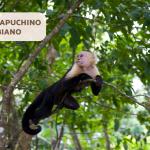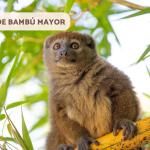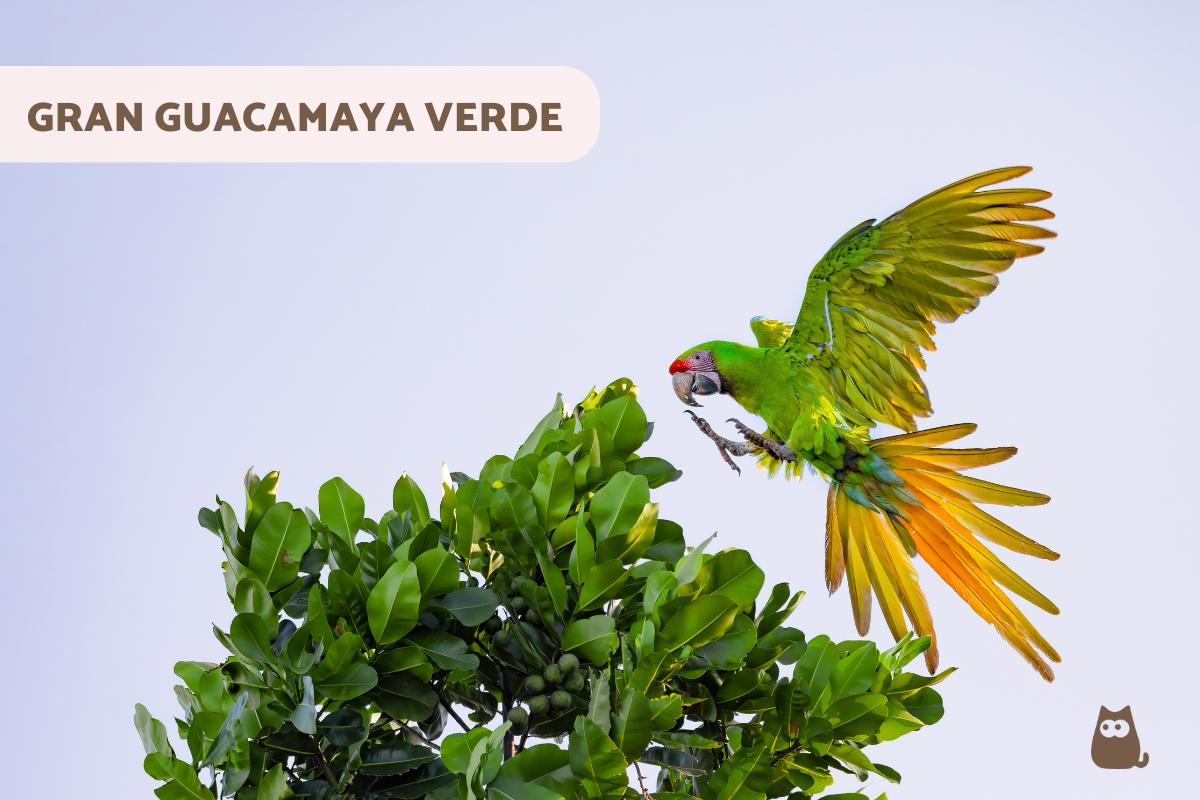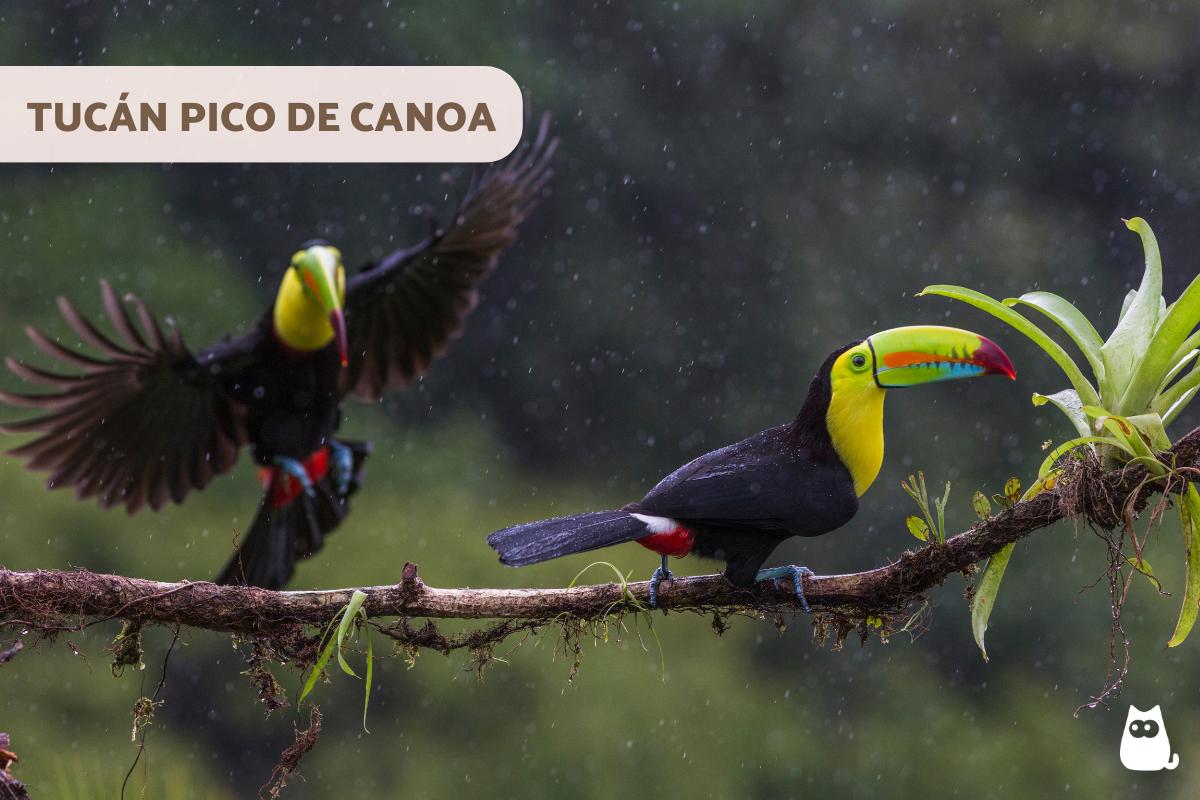Animals in the Tropical Rainforest


Imagine a place where the air is thick with humidity and the sounds of exotic birds and animals fill the air. Where the trees are so tall that they block out the sun and the ground is covered in a lush layer of vegetation. This is the world of the tropical forest, one of the most biodiverse ecosystems on Earth. Tropical forests are home to an estimated 50% of all plant and animal species on the planet.
The following AnimalWised article has listed 60 tropical forest animals with images.
The adaptations of tropical forest animals to their environment
Tropical forests are incredibly complex ecosystems, thanks to their rich diversity of species and elements. Within these lush environments, a complex web of trophic relationships forms, spanning from the soil's depths, housing millions of microorganisms and various animals, to the towering canopies of the large trees.
Animals in tropical forests are highly adapted to their surroundings, and while there's some variation among different types of tropical forests, there are some common characteristics that define the fauna:
- Camouflage skills: many species have developed effective camouflage to blend into the dense foliage of tropical forests. This helps them avoid detection by both predators and prey, ensuring their survival.
- Climbing abilities: with life spread across various levels of the forest, climbing is a crucial skill. Many animals are adept climbers, allowing them to navigate the vertical landscape of the forest with ease.
- Compact sizes: large animals face challenges in moving through the thick vegetation of tropical forests. As a result, most of the forest's inhabitants tend to be of medium to small sizes, which aids in maneuverability within this environment.
- Warning colors: some animals display vibrant colors to warn potential predators that they're not suitable for consumption. This is a form of self-defense known as "aposematism" and often indicates that the animal is poisonous or unpalatable.
- Low-light adaptations: sunlight struggles to reach the forest floor and understory, creating dimly lit conditions. Many animals have adapted to this by developing good night vision or other mechanisms to thrive in low-light environments.
Tropical forests, with their intricate ecosystems and specialized inhabitants, remain a subject of fascination for scientists and nature enthusiasts. Their unique characteristics and the delicate balance of life within them make these forests truly remarkable.
You might also like our article on the 10 most exotic birds in the Amazon rainforest.
Animals of the tropical forest
Tropical rainforests are among the most vital ecosystems on Earth, renowned for their extraordinary biodiversity and their pivotal roles in global energy and material cycles, particularly water.
These lush expanses flourish near the equator, where they enjoy a ceaseless deluge of rainfall, averaging an astonishing 2,000 to 2,500 liters per square meter each year. This consistent downpour, coupled with temperatures ranging from 25 to 30 ºC, creates an environment where humidity often exceeds 80%.
The flora within tropical rainforests is nothing short of astounding, characterized not only by its density but also by the towering heights reached by its trees. These environmental conditions provide a sanctuary for an incredibly diverse array of animals.
Consequently, tropical rainforests host an extensive and varied fauna, encompassing both invertebrates and vertebrates. Among these, arthropods, annelids, and mollusks thrive, along with an impressive array of amphibians, reptiles, birds, and mammals.
Here are some of the most emblematic denizens of the tropical rainforest, along with their scientific names:
- Jaguar (Panthera onca)
- Common sloth (Choloepus hoffmanni)
- Guyana red howler monkey (Alouatta macconnelli)
- Lowland tapir (Tapirus terrestris)
- Ocelot (Leopardus pardalis)
- Cotton-headed marmoset (Saguinus oedipus)
- Tamandua (Tamandua tetradactyla)
- Giant armadillo (Priodontes maximus)
- Common toucan (Ramphastos toco)
- Scarlet macaw (Ara chloropterus)
- Resplendent quetzal (Pharomachrus mocinno)
- Harpy eagle (Harpia harpyja)
- Golden tanager (Tanara arthus)
- Angelfish (Pterophyllum scalare)
- Glass Catfish (Kryptopterus vitreolus)
These animals, perfectly adapted to their rainforest habitats, play a significant role in the beauty and ecological balance of tropical rainforests.

Animals of the dry tropical forest
The dry tropical forest differs significantly from its rainy counterpart due to the amount of yearly rainfall it receives. This variance profoundly affects both the vegetation, which has adapted to these distinct precipitation patterns, and the animals that inhabit this environment.
In dry forests, annual rainfall typically falls within the range of 500 to 1500 millimeters per square meter. These regions experience temperatures ranging from 20 to 35 ºC. Given these environmental conditions, a considerable portion of the vegetation has evolved to shed its leaves as a water-saving strategy. This adaptation is mirrored in the local wildlife, where both plant and animal life demonstrate remarkable resilience to prolonged drought periods.
It's important to emphasize that these unique characteristics do not impede the development of a diverse fauna in the dry tropical forest. While certain species may be absent, a wide variety of animals from various groups have successfully adapted to thrive in these regions. Here are some of the notable animals that make their home in the dry tropical forest:
- Cougar (Puma concolor)
- Long-nosed hairy armadillo (Dasypus pilosus)
- Fruit bat (Artibeus jamaicensis)
- South American coati (Nasua nasua)
- Guayaquil squirrel (Sciurus stramineus)
- Brazilian porcupine (Coendou prehensilis)
- Colombian capuchin monkey (Cebus capucinus)
- Great green macaw (Ara ambiguus)
- Royal woodpecker (Colaptes melanochloros)
- Gray striped hawk (Buteo nitidus)
- Indian peafowl (Pavo cristatus)
- Common green iguana (Iguana iguana)
- Red-tailed boa (Boa constrictor)
- Plow turtle (Astrochelys yniphora)
- Giant jumping rat (Hypogeomys antimena)
These remarkable creatures, finely attuned to the challenges of the dry tropical forest, contribute to the richness and diversity of life in this unique ecosystem. Be sure to read this other article on organisms that live in extreme environments.

Animals of the tropical monsoon forest
The tropical monsoon forest is a unique and vibrant ecosystem, home to a dazzling array of animal life. These forests are characterized by two distinct seasons: a wet season of heavy rains and a dry season of drought.
During the wet season, which coincides with the monsoons, these forests receive an annual rainfall ranging between 700 and 2,000 liters per square meter. This deluge of water transforms the forest into a lush green paradise. The trees and plants grow rapidly, providing food and shelter for a multitude of animals. Birdsong fills the air, and monkeys swing through the branches. Elephants trumpet and tigers roar. The forest is a symphony of life.
But when the dry season arrives, the landscape undergoes a dramatic transformation. The rains taper off, and the forest takes on a more subdued hue. The trees shed their leaves, and the animals must adapt to the changing conditions. Some animals migrate to other areas in search of water and food. Others find ways to survive the dry season in the forest, such as burrowing into the ground or estivating (entering a state of dormancy).
Despite the challenges of the dry season, the tropical monsoon forest remains a vital ecosystem for a wide range of animals. Here are some notable examples of animals that inhabit the tropical monsoon forest:
- Asian elephant (Elephas maximus)
- Bengal tiger (Panthera tigris tigris)
- Greater bamboo lemur (Prolemur simus)
- Sumatran orangutan (Pongo abelii)
- Timor python (Malayopython timoriensis)
- Lesser florican (Sypheotides indicus)
- Black-crested gibbon (Nomascus concolor)
- Indian civet (Viverra zibetha)
- Golden pheasant (Chrysolophus pictus)
- Gray langur (Semnopithecus schistaceus)
- Rhesus macaque (Macaca mulatta)
- Silvery lutung (Trachypithecus cristatus)
- Proboscis monkey (Nasalis larvatus)
- Aye-Aye (Daubentonia madagascariensis)
- Gray mouse lemur (Microcebus murinus)
These remarkable creatures have adapted to the distinct cycles of monsoon and drought in the tropical monsoon forest, adding to the region's biodiversity and ecological significance.

Animals of the flood troipical forest
Tropical flood forests are a unique and dynamic ecosystem, characterized by their ability to absorb and seasonally flood vast areas of land.
These forests receive an annual rainfall of 1,500 to 3,000 liters per square meter, creating diverse wetland areas, swamps, and wooded peatlands. The vegetation here has evolved ingenious adaptations to thrive in soils with limited aeration. Additionally, these forests are home to towering trees, which provide a canopy for a diverse array of animal life.
The fauna of tropical flood forests varies seasonally, reflecting the changing water levels. During the flood season, the forest is transformed into a vast aquatic ecosystem. Fish, amphibians, reptiles, and aquatic mammals thrive in the flooded forests.
As the water levels recede during the dry season, the forest landscape transforms once again. The animals that inhabit the flooded forests must adapt to the changing conditions. Some animals, such as crocodiles and caimans, remain in the forest, even as the water levels drop. Others, such as fish and amphibians, migrate to permanent bodies of water, such as rivers and lakes.
Here are some of the representative animals found in tropical flood forests:
- Pink Amazon river dolphin (Inia geoffrensis)
- Amazonian manatee (Trichechus inunguis)
- River stingray (Potamotrygon constellata)
- Electric fish (Electrophorus electricus)
- Red-bellied piranha (Pygocentrus nattereri)
- Giant catfish (Pangasianodon gigas)
- Western gorilla (Gorilla gorilla)
- Bonobo (Pan paniscus)
- Green anaconda (Eunectes murinus)
- Emerald boa (Corallus caninus)
- Poison dart frog (Phyllobates terribilis)
- Hoatzin (Opisthocomus hoazin)
- Jabiru (Jabiru mycteria)
- Canoe-billed toucan (Ramphastos sulfuratus)
- Orinoco crocodile (Crocodylus intermedius)
It's important to note that the remarkable fauna of tropical forests extends far beyond the examples mentioned here. Some animal species in these forests are specialists adapted to specific types of tropical forests, while others may inhabit various forest types or even different ecosystems altogether, like the adaptable puma.
Do not miss this other article on animals that live in trees, where we explain their main characteristics.

If you want to read similar articles to Animals in the Tropical Rainforest, we recommend you visit our Facts about the animal kingdom category.
- RAE. (2023). Monsoon . Available at: https://dle.rae.es/monz%C3%B3n
- Smith, J. M. B. (2023). Tropical rainforest . Encyclopedia Britannica. Available at: https://www.britannica.com/science/tropical-rainforest
- IUCN (2023). The IUCN Red List of Threatened Species. Available at: https://www.iucnredlist.org
Animals in the Tropical Rainforest photos















































